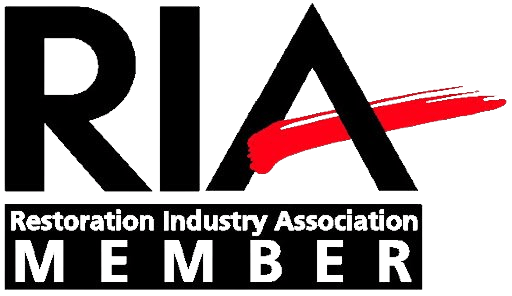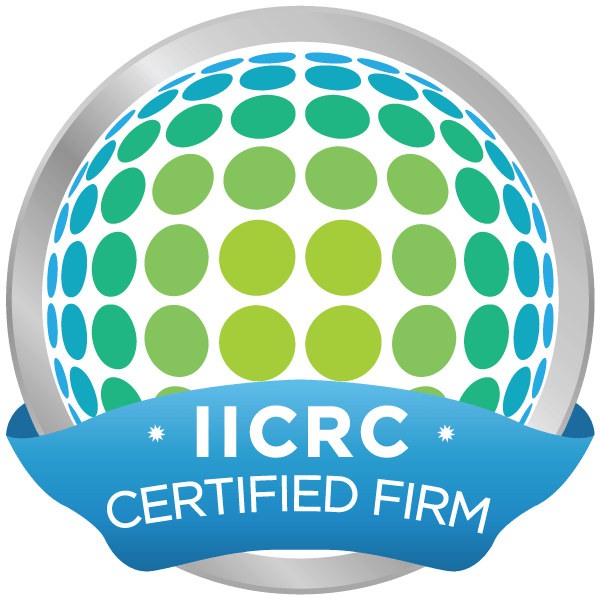Expert restoration tips
Storm damages can occur on your property in many ways including flooding caused by extremely heavy rain showers, hurricanes and tidal surges on your property, wind damages from tornados, wildfire damages, ice, and snow storms in the winter months. When tragedy hits, you should follow a storm damage cleanup schedule to protect yourself. Document the Storm Damages Your documentation is important for reporting damages to your insurance company and getting quotes for restoring your damaged items properly. Snap photos with your camera on your phone of all damages and you can also take notes later to support your photos. Check your property over thoroughly for damages no matter how small. Take photos of damaged parts of your roof, on the exterior of your home and any other structures on your property, such as garages, storage buildings and playhouses for your kids. Document all broken windows from storm damages and all broken uprooted or damaged trees as well as any other landscaping features on your property. Call your property insurance agency to begin your claim. In the case of severe damage, ask your insurance agent if you are covered to stay in a hotel temporarily until repairs are made and you can access your home again. Personal Safety Mark areas on your property that could potentially be hazardous to people and pets. For example, use lawn paint to draw a circle around a damaged tree that could fall or hanging limbs that could fall on a person or pet. Advise your family not to enter into the circle around any objects outside. You may want to take pets out on their leashes to avoid these problem areas and keep them safe. If your home is severely damaged, make certain it is safe to enter before you collect family heirlooms, photographs, and important papers. Check with your local emergency officials to make certain that the drinking water is safe and access your local road closures. In the case that you need to leave your home, you want to make sure that you know which routes to take. If you need a property restoration company , contact the team at MGM Restoration today.
A house fire is terrifying because the flames can cause serious bodily harm, resulting in serious injury and even death. As relieved as homeowners are after the fire has been put out, unfortunately, the flames alone are not the only potential source of serious health issues. Fires leave behind soot, smoke, corrosive byproducts and possibly even mold; all of which can negatively affect your health. It is extremely important that you know the risks caused by the byproducts of a fire. Following these tips for post-disaster home restorations will help keep you and your family safe following the aftermath of a fire. Structure Stability The first and one of the most important things to remember following a fire is that the structure of your home may be compromised. There may be several hidden hazards that you aren’t aware of, so always have a professional inspection before you enter the property and only go in when it has been deemed safe to do so. Wear Protective Gear Before entering your home following a fire, it is important to put on protective equipment, including an approved respirator. Smoke inhalation is extremely dangerous because of the chemicals it contains, including toxins such as carbon monoxide and hydrogen cyanide. Hydrogen cyanide itself is more than 30 times more toxic than carbon monoxide and inhaling a combination of both toxins can be fatal. Protective gear will also protect your skin, eyes, and lungs from soot and mold. Make A Plan Before starting any of the restoration work it is essential that you have a post-disaster plan, which should include the supplies and methods necessary to complete the work and where to dispose of the materials from the clean-up. The first call you should make is to your insurance company because most insurance companies require claims be filed immediately after a disaster. After calling your insurance company, contact a company that specializes in home restorations following a disaster. Not only will most restoration companies work with your insurance company, but it is the safest way to complete the clean-up. A restoration company will have the materials and equipment necessary to safely and effectively clean-up the water, smoke, soot, and mold. If a fire breaks out in your home, first and foremost make sure everyone is safely evacuated and do not return to your home until it has been completely restored and deemed to be safe. If you've recently suffered from storm damage , contact the experts at MGM Restoration today for all your property restoration needs.
When a storm rolls in, the wind can cause significant amounts of damage to your home. Whether you’re now dealing with a few missing shingles, broken windows, or flooding in the basement, you’ll want to know where you stand and what to do. Fortunately, help is available. You Need Professional Assessment and Repairs A few tree limbs in the yard may not be cause for concern, but if there’s any damage to the home, it’s best to hire a professional to come in to assess the damage. In some cases, the worst damage is unseen. If you leave these problems untreated, you’ll have bigger problems in the future. An assessment should be affordable, and you can then make an informed decision about repairs. Insurance May Cover the Cost of Repairs Storm damage is the perfect time to call on the insurance company for a bit of help. You’ll have to pay the deductible, but most companies cover many different types of damage. However, if you live in an area that’s more likely to have hurricanes or flooding, those damages might be excluded unless you’ve added a rider onto your plan. Many contractors work directly with insurance companies for payment. Insurance May Not Cover All Costs People are often surprised when the insurance company doesn’t pay for the entire cost of repairs. That’s because the company only pays the amount that the damaged property was worth. For instance, shingle roofs typically last only 20-25 years. If your 18-year-old roof was damaged in a storm, the insurance company won’t pay the full price of a brand new roof. After all, you would have had to pay your own money to replace it soon. Homeowners are usually able to make a decision about repairs after learning how much the insurance will cover. If your home’s been damaged, it’s smart to have it fixed as soon as possible, contact MGM Restoration today for all your storm damage needs.
Some plumbing issues are blatantly obvious, and involve significant volumes of water where it doesn't belong. In other cases, however, a broken pipe can occur without obvious signs. The following tips are offered to assist homeowners in determining whether they have a broken or damaged pipe. Being able to identify common plumbing issues can help homeowners address problems in a timely manner and avoid expensive repairs or extensive water damage within the home. Unusual Sounds One of the most common indications of a broken pipe involves unusual or abnormal sounds. Strange whistling sounds can result if a pipe becomes dented. Because water is no longer able to flow freely through the pipe, whistling sounds result. Without being addressed, increased water pressure can cause the pipe to burst, necessitating an expensive repair and risking serious water damage. Unusual Smells Another indicator of a broken pipe is the presence of unusual or unpleasant odors. When pipes become broken or backed up, sewage is unable to exit the plumbing system properly. It is important to address the source of any foul odor within the home, as sewage poses a significant health risk to your family and pets. Unusual Sights The presence of puddles or standing water within your home can indicate a broken or damaged pipe. Homeowners often overlook small accumulations of water in the belief that the puddles are the result of spills or the handiwork of children or pets. It is important to take note of any area where water frequently accumulates, and to determine if the source is broken or damaged plumbing. Another sight that indicates a broken pipe is an unusually high water bill. Homeowners should be aware that any unusual sounds, odors or sights can suggest broken or damaged pipes within the home. Addressing plumbing issues as they arise is an important step in home maintenance and can head off many more serious and expensive plumbing issues. A broken pipe is not uncommon and is a plumbing matter that can be quickly and easily handled by professional. If you suspect any broken pipes in your home and are looking for a property restoration company to help solve the issue, contact the experts at MGM Restoration today.
Although it sounds like both terms should mean the same thing, flood damage and water damage are decidedly different. And these differences come into play when a homeowner plans to make a claim to his or her insurance company. To keep your assets safe, make sure your insurance plans provide you with the coverage you need for both flood and water damage claims. Flood Insurance One major distinction for flood damage is that the repairs are typically not covered under a standard homeowners insurance policy. Homeowners will have to purchase a separate policy to cover damage caused by rising waters. To be labeled a flood, water must have collected on the ground at some point. Floods are caused by perils such as overflowing rivers, heavy rains, overflow of tidal waters, and mud slides. Another way to decipher if you are dealing with a flood claim is to find out if two or more properties have sustained water damage. Water Damage In many home insurance policies, water damage is part of your standard policy. The main distinction from flood insurance is that damage would occur before the water hits the ground. An example of a claim that would fall under water damage is melting snow on the roof caused a cave in. Another water damage incident could include broken windows resulting from high winds that lead heavy rains to soak your flooring. Non-weather events may also be covered under a water damage claim such as a broken pipe found within your home. If you have any questions about flood damage versus water damage, contact an insurance agent to find out what type of claim you need to file. If your home is located on a flood plain, your agent is likely to recommend you purchase additional flood insurance to reduce your financial risk. If you're looking for a professional property restoration company, contact MGM Restoration Inc today.
The storms have stopped and the wind is calm. Outside the skies begin to clear, revealing downed trees, misplaced outdoor furniture, and random pieces of debris. From your window, your property appears unharmed. But is it really? What about the roof? The windows? The new siding and gutters? There's no telling what kind of property damage a storm can bring. Even if it appears your property survived the wicked winds, taking a walk around your home could reveal a hidden problem you might not have seen otherwise. Here's a quick checklist of what you should look for, courtesy of the National Storm Damage Center: 1) Window Damage Get up close and personal with your windows, checking for shattered glass, broken panes, or damaged frames. Look carefully for small holes or cracks in unsuspecting areas. 2) Roof Damage Check for loose or cracked shingles. If you have an asphalt roof, unidentified dark spots could be storm damage. Determine if any debris is lodged under shingles, too. 3) Clogged Gutters Heavy rains can down limbs, bringing with it leaves and small branches that can clutter your gutter. Check for fragments jammed along the gutter and in the downspout. 4) Exterior Damage Siding can tear loose, paint can peel, and stucco can break free. Even brick can suffer the wrath of a bad storm. Take a walk around your home and check for any potential damage. Holes, breaks, and splitting are common side effects of a storm. Discoloration of siding or brick is another symptom. Identifying any immediate damage can save you time and money, especially if the damage is excessive and requires a call to your insurance company. Waiting to repair your home can create more costly problems somewhere down the road. If you are looking for a professional property restoration company to repair any damage done to your home due to a store, contact MGM Restoration Inc!
Mold in your home is caused by spores, too small for the eye to see, that float in from the outside air and then land on wet surfaces. If your house has high humidity, condensation, or a water leak, such as in a pipe behind the walls, you are more likely to get mold. If the mold lands on a wall that is nonporous, then you can wipe it away with a wet cloth. But you will have real problems if you get mold in your drywall or cavities behind the walls. How to prevent mold from growing in your house Unfortunately, you can’t prevent spores from getting into your house. But you can help to avoid mold growth by making sure that your home is as dry and well ventilated as possible. You should dry wet areas as soon as you can. You should use mold-resistant products as much as possible. You should monitor the humidity in your house, which a modern digital thermostat should allow you to do. If you have any leaky pipes, you should get them fixed. Cleaning mold from your house If you have mold, which is indicated by bulging, discolored walls, as well as a foul smell and, in some cases, allergic reactions, a number of chemicals exist that will kill mold on surfaces that are easily accessible, including bleach, borax, vinegar, and ammonia. You have to be very careful with some of these chemicals because they can be toxic, especially in enclosed spaces. If mold has gotten into porous surfaces such as drywall, in the wall cavities, or certain hard to access parts of the attic, you may have to call in professionals. If you're looking for a professional property restoration company , contact MGM Restoration today!
Severe storms can come out of nowhere during the summer months. Regardless, of where you live you are at risk for storm damage. A number of states have a much higher risk for devastating storm damage caused by tornados and hurricanes. If you live in an area that is prone to hurricanes and tornados, then you are probably better prepared for a severe storm than someone who lives in say New York, where they have to worry more about winter storm damage. That is why people who live in areas such as New York are usually not prepared for severe storms, nor do they know how to properly prepare. 3 Tips to Prevent Storm Damage: Keep your lawn free of broken branches and other similar debris. If you can secure your lawn and patio furniture, a patio table could do a lot of damage if a big gust of wind picks it up and tosses it through a window. Pick up all toys and pool chairs and put them in the pool house or garage at the end of each day. If you get a severe storm during the night or while you are at work, you will be glad you picked up everything. If you know a storm is coming be sure to remove any garden and lawn decorations, securing them inside. Keep all of your trees well maintained, remove dead or broken branches. If you have trees that could pose a potential problem during a summer storm, you may consider having them removed especially if they are real close to your house and could fall on it. Make sure your gutters are securely attached, so they do not fly off your house. Make sure your gutters are clean so the water can properly flow through and not build up, this can cause the gutter to break. Other tips to keep your home safe during a summer storm include; make sure you lock windows and doors to prevent rain from coming in and ruining carpets and personal items inside your home. Make sure you have a sump pump to pump water out of your basement in case it floods. Always, keep up to date with weather alerts for your personal safety and your homes safety. If you're in need of storm damage repair services, contact MGM Restoration today.
Mold is a far more common problem in homes today than many homeowners realize. While a spot of mold here or there may not be cause for major alarm, larger mold infestations carry huge consequences. Knowing what the hazards of a mold infestation is and how to spot it is the first step to remedying they problem. A stray spot of mold here and there that can be handled by using bleach or other mold removal products is not a huge issue. Bathrooms and kitchens are a very common area for mold to grow as they are very wet and often warm. A mold infestation is any amount of mold that goes above and beyond the normal scope of mold build up in a home. The first major health risk of mold is of course your breathing. Breathing in mold spores can cause asthma, can aggravate allergies, and can even cause new allergies and breathing problems that you may not have had prior to the infestation. These issues can be short term and may dissipate when the mold is taken care of but if they are serious enough, they can become permanent issues that are not fixable. Another health issue to keep in mind is eye irritation. Mold is an irritant that often finds its way into the air and can cause your eyes to get red and puffy. It may even cause swelling in some cases where you are more allergic. The irritation to the eyes is generally something that does go away once the mold is removed. The last real health risk that is caused by mold is of course skin irritations. Mold when in contact with the skin can cause rashes, swelling, and general irritation and discomfort that generally goes away once the mold is taken care of. These are all serious issues that can make living in your home miserable and uncomfortable at best. If you're looking for a professional property restoration company , then contact MGM Restoration today!
Water damage is something that every home and business owner or renter has to be wary of. That's especially the case when the weather starts to heat up a bit and the snow starts to melt or rain starts to pour. But what happens exactly when your place suffers from water damage? Here are the steps and what to expect in the water damage restoration process: Inspection Finding out where the water damage is coming in and why it's happening is the first and most important thing to handle for professionals. If they just try to clean up the mess right away, it won't stop anything. Drying Once the leak, break or issue is resolved, the professionals will bring in their industrial equipment to remove the water and dry the area. This will also include dehumidification to make sure the areas are completely dry that way repairs and carpet care can begin. Full Repairs and Restoration Water damage normally damages more than just the carpet. On top of taking care of the flooring, professionals will help fix structural damages as well as begin to sanitize and deodorize the area so mold and other smells do not linger behind. Carpet Care After everything is cleaned up and fixed, the experienced professionals will do a full carpet cleaning and reinstallation so your home or business can go back to looking and feeling exactly the same as before. Whether it's the winter, spring or summer, water disasters could happen anytime at your home or business. That is why it's important to have an experienced and trusted property restoration company in your phone book like MGM Restoration. Contact us first whenever in need and we'll get the work done fast and efficiently.






